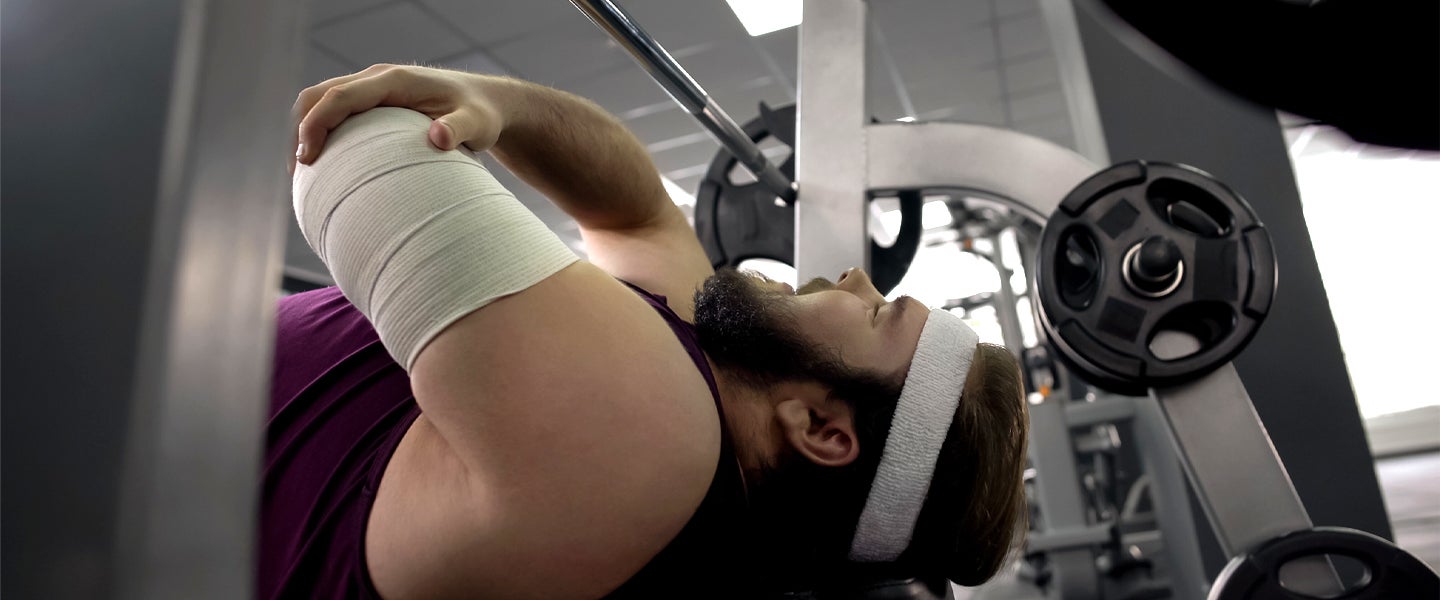When it comes to working out, we’re not all strongmen like Hafþór Júlíus Björnsson (aka The Mountain). In fact, many of us could go our entire lives and still have no clue how a lat pull-down differs from an incline bench. Which is to say, there’s no shame in not knowing your way around a gym, or how to start the process of getting in shape. Plus, that’s what we’re here for — to make sure that when you’re in the gym, you at least never have to sweat the small stuff.
I’ve been an athlete for most of my life, but recently I heard about this condition you can get where, if you work out too hard, you can gunk up your kidneys with dead muscle tissue. Is this really something I need to worry about?
The condition you’re referring to is called rhabdomyolysis, or as doctors often refer to it, rhabdo (pronounced rab-dough), and yeah, it’s pretty serious. According to the BMJ, annual cases in the U.S. number more than 12,000 per year, and while it’s not as common as a muscle pull, that number is deceiving. Because Jaclyn Spiegel, an internal medicine hospitalist, tells me that that number only really counts folks whose symptoms warrant getting checked out. “The problem with exercise-induced rhabdo is that it often goes undiagnosed. You probably think you’re just sore. Cases of rhabdo really only count people that are in bad enough shape to come in the hospital, or whose urine is changing because they’re experiencing renal failure.”
Without getting too deep into anatomy and physiology, rhabdo occurs when the sheaths that cover our muscles breakdown, which can cause increased levels of calcium in our muscles. As calcium levels increase, cells within our muscles themselves are overwhelmed and begin to fail, leading to a cascade-effect of bad shit entering our bloodstream, i.e., the “gunk” you’re referring to. That gunk is what causes symptoms like pain, swelling, and if not treated, kidney damage and even cardiac arrhythmia.
Rhabdo is typically found in people who overexert themselves while exercising, past the point of fatigue. That’s why rhabdo is commonly diagnosed among the military, and newcomers to high-intensity workout routines where someone who is used to one type of low-intensity workout quickly ramp up their output. “When CrossFit started booming, we began to see a lot of new cases, and same with military recruits starting boot camp. Because these types of extreme workouts are often a shock to the system,” explains Spiegel.
Thankfully, circumstances that could lead an athlete to develop rhabdo are easily identifiable. Again, she reiterates, “Trying extreme, eccentric workouts when you’re body’s not used to it, especially if you’re not in the gym a lot and you suddenly jump into something like CrossFit, is the big one. She adds, “Also, if you’re working out in intense heat or cold, or if you’re taking an NSAID like ibuprofen that can depress kidney function.”
And while severe symptoms of rhabdo can send you to the hospital, or in a small number of cases, even kill you, the condition rarely gets that bad because prevention is as simple as staying hydrated. “You can get rhabdo, and then it can go away by drinking water or fluids, because you’re flushing the system of the breakdown product,” explains Spiegel.
So is rhabdo something that you, Johnny Just Wants to Get Back in Shape, really need to be concerned about? Sure, but it all depends on how you workout. Basically, if you’re going to work your body hard in the gym, don’t go from 0 to 100. “The most important thing to do is listen to your body: If you’re feeling pain, stop what you’re doing. And if you’re trying a new workout regimen, build up to it and drink plenty of water.”
That’s a pretty small price to pay to make sure you’re not pissing blood in the locker room.

